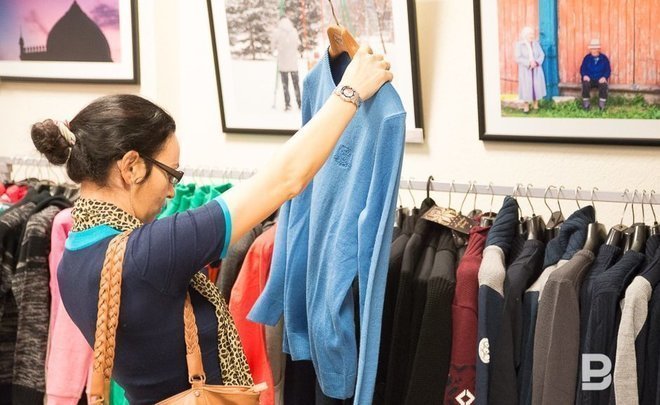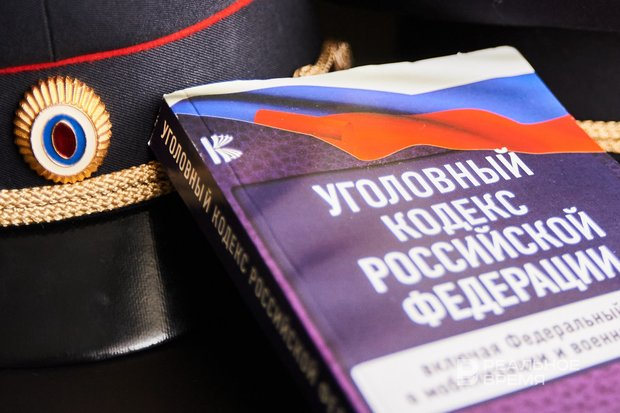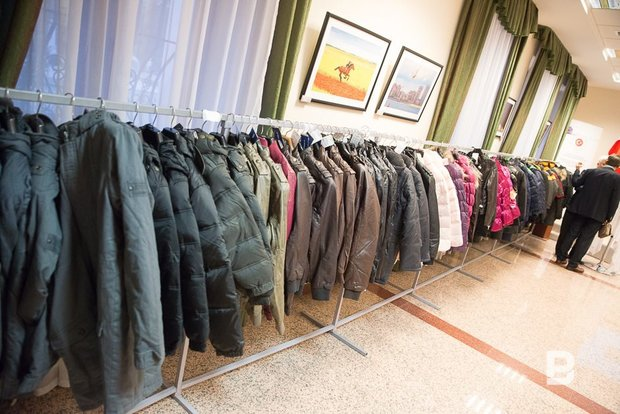‘The mandatory QR code on the dress or blouse will require costs from businesses again’

New requirements for mandatory labelling for products of the light industry was planned to be launched in Russia — from formal suits to knitted wear, handkerchiefs and ties. The list has a total of 13 product groups. However, the initiatives of the Russian Ministry of Industry and Trade were put off for six months. Clothing labelled by Russian producers is designed to remove counterfeit that floods the Russian market, this means it will favour consumers. However, representatives of the sector ambiguously assess the novelty citing big costs and, as a consequence, the rise in price of the end product. Realnoe Vremya’s correspondent figured the situation out.
“The decree hasn’t yet been confirmed by the government”
Russian producers of light commodities were to start labelling their goods. The updated list includes 13 product groups:
- coats, outdoor jackets, anoraks, shell jackets and analogous knitted products for women, men and children;
- industrial and professional clothes for men and women;
- hosiery or knitted products — suits, jackets, blazers, dresses, skirts, pants, onesies, knickers and shorts — for everybody;
- knitted fabrics, including artificial fur;
- suits, jackets, blazers, pants, onesies, knickers, shorts — for men and boys;
- the same, plus jackets, dresses, skirts, skirt pants, pants for women and girls;
- men’s shirts — textile and knitted;
- blouses, shirts and body shirts for women and girls;
- knitted sports suits and skiing suits — for everybody;
- other clothes from fabric;
- jumpers, pullovers, cardigans, vests and similar knitted products — for everybody;
- shawls, scarves, veils, ties, handkerchiefs, except for knitted products;
- felt or non-woven materials, impregnated fabrics — for everybody.
Business had to start labelling clothes with QR codes with information about the producer, fabric, item number and other data on 1 June, and it was planned to ban the sale of non-labelled products of these group on 1 September. However, Realnoe Vremya was told in Fair Sign National System that the novelty was postponed — approximately until 1 December 2023.
“This term is approximate again. It can be put off because the decree hasn’t yet been confirmed by the Russian government,” the operator of the Fair Sign mandatory labelling system said.

Labelling the products from the updated list wouldn’t tough for many producers — some market players already have experience in this issue and necessary equipment. But the sale of goods from the official list without labelling would threaten the producers with serious fines, even criminal charges and confiscation of non-labelled products. Depending on the type of violations, fines for sole traders are from 5,000 to 10,000 rubles with confiscation, for organisations — from 50,000 to 300,000 rubles with confiscation.
Also, those found guilty can be imposed compulsory labour or imprisonment for up to three years, and if the damage is significant, they could be fined up to 9 million rubles.
To free consumers from fakes
The draft of the dedicated decree was created by the Russian Ministry of Industry and Trade as early as last year. As an explanatory note read, 12.4% of light products were illegally imported to Russia in 2021, a year earlier, this indicator reached almost 12%. The mandatory labelling can help stabilise the situation like in the case of fur labelling, which has been mandatory since 2016. This measure helped to detect and halt the illegal commodity turnover, thus reducing the amount of low-quality products, the authors of the initiative claim.
According to the law, the mandatory clothing labelling was launched in Russia in January 2021. Four product categories turned out to be the first on the list:
- clothes, including uniform made of leather or blended leather;
- machine or manually knitted blouses for women and girls;
- coats, short coats, jackets, winter jackets (including for skiing), wind jackets and similar products — for everybody;
- bed, kitchen, toilet clothing.
The Ministry of Industry and Trade considers that the introduction of the mandatory clothes labelling system at production stage guarantees authenticity and product quality for the consumer. Also, any buyer can track the whole journey of the purchased product, while a fake cannot be involved in the circulation.

Nowadays the Russian mandatory labelling system has over 167,700 participants. The labelling mechanism is spelt out on the website of the Centre for the Development of Promising Technologies, which is the operator of this process (Fair Sign). The manufacturer pays for code generation separately for every item. Then the printed Data Matrix barcode needs to be placed on every product — on the label or the packaging. But before this, special equipment has to be purchased: on average, it is a 2D scanner to read QR codes, not to mention a new type of codes created by the centre.
“It is rather about the benefit for the buyer”
There are about 250 clothing enterprises today in the Tatarstan light industry — it is both big factories and small tailor’s workshops. All representatives of this market differently evaluate the idea of labelling several clothing groups. So in a talk with Realnoe Vremya, Irina Kupryakhina, director of Iren tailor shop making school uniform noted that she has an ambivalent attitude to this initiative:

Founder of Alga brand from Tatarstan Timerkhan Ziyatdinov is sure that the introduction of rules for mandatory labelling is still needed for manufacturers. The part of the assortment his company sells is already labelled, this is why the entrepreneur won’t need any costs on the equipment needed to print the codes:

Brossko company from Chelny has been making school and corporate uniforms and formal clothes for women for about 10 years now. Today the assortment isn’t yet fully eligible for labelling, notes its Director General Daria Semyonova:
“Clothes labelling is rather about the benefit for the consumer so that they can full information about the product they are buying. In fact, I am not sure some of the buyers really care. All the information about this product, certificates are provided in our stores, but to be honest, I have never seen anybody coming closer and examining it.”
Vice Chairman of the Tatarstan Chamber of Commerce and Industry Artur Nikolayev notes that as for the issues related to mandatory product labelling, many producers say these new trade rules carry additional costs:

Meanwhile, as the operator of the Fair Sign says, the united national labelling system will cover all sectors of the industry by 2024 — from cigarettes and medicines to clothes and baby food. At the moment the pilot project is implemented for medical products, a labelling experiment for some alcohol-free drinks, including juices, started on 1 June and will end in late august, and mandatory labelling is launched in the country for children’s water from 1 September.